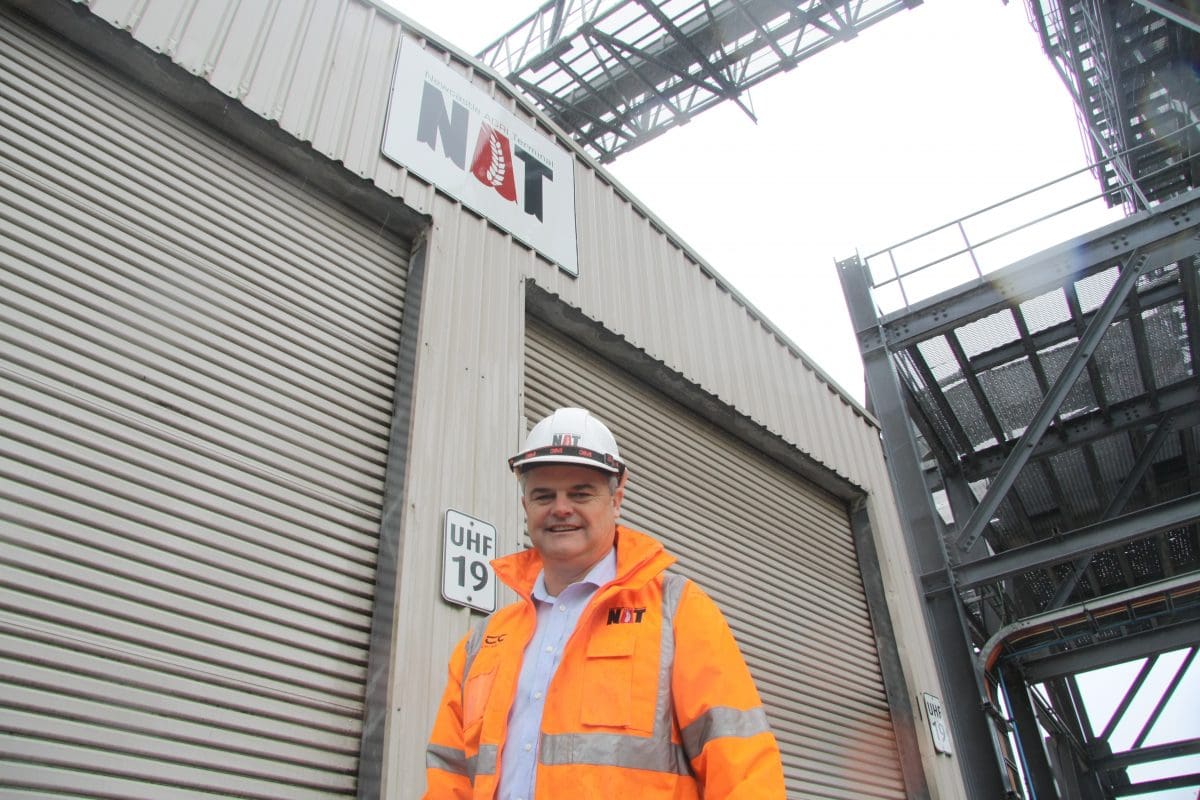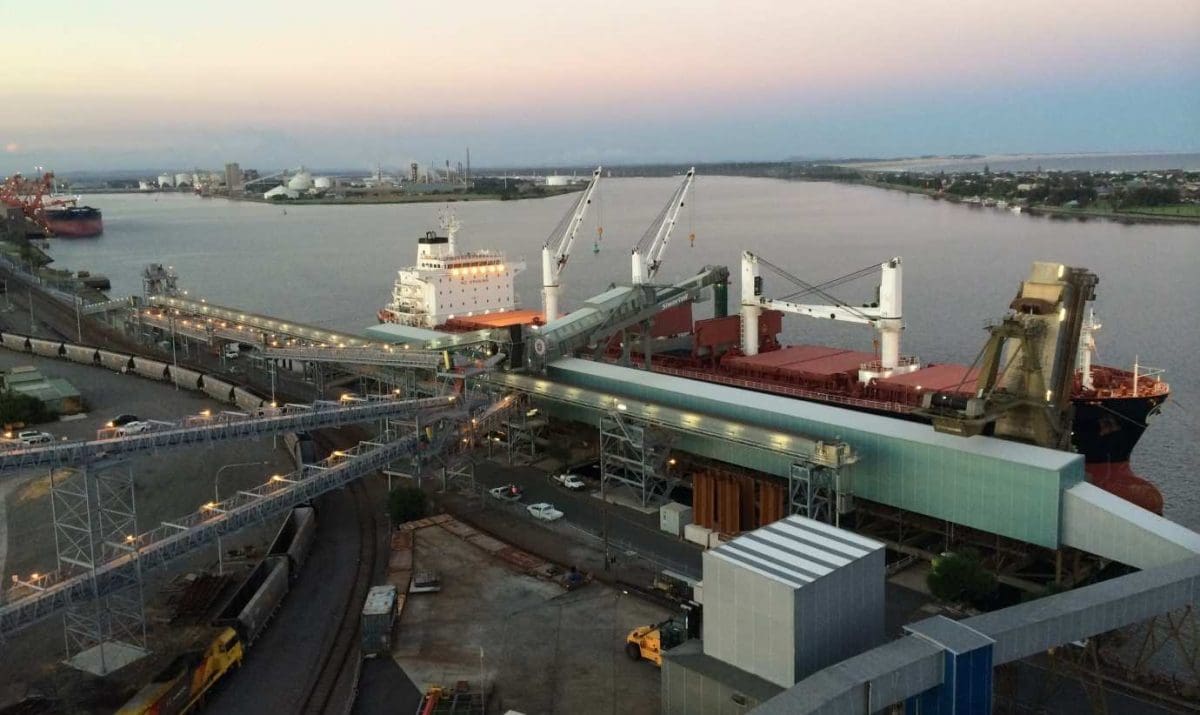
NAT executive director Martin MacKay
NEWCASTLE Agri Terminal (NAT) is on track to export its biggest ever amount of grain in the current shipping year, despite flooding and bad weather which impacted operations in March.
“April was our biggest month ever — we did 154,000 tonnes — and we will have shipped 800,000t of new-crop by the end of the month,” NAT executive director Martin MacKay said.
“That puts us well ahead of the volume we did at the same stage in 2017.”
Bulk commodities shipped have been wheat and durum, and NAT also has a container-packing facility which handles chickpeas, sorghum, milling wheat and durum grown mainly on the nearby Liverpool Plains of northern New South Wales.
Partnering in ownership of NAT with Jock Carter and Mr MacKay’s business CTC Terminals are global trading heavyweight Glencore, Mitsubishi-owned Riverina Australia, and Western Australian grower cooperative CBH Group.
Following Qube’s buyout of other stakeholders in the Quattro Terminal at Port Kembla, it makes NAT the only multi-stakeholder bulk grain port in Australia, and it has played a major part in shifting the bumper 2020-21 NSW crop.
The NAT site loads at a berth shared with a minerals exporter, and has 60,000t of storage on site and nowhere else.
With this, it loads grain cargoes predominantly ranging in size from around 30,000t to 55,000t, depending on the customers’ requirements and capability of the receiving port’s facilities.
Road supplements rail
NAT was the brainchild of Mr Carter, who saw an opportunity post-deregulation for a second grain-export terminal in Newcastle to supplement GrainCorp’s capacity.
In 2009, Mr MacKay joined Mr Carter in pitching the proposal to build NAT to stakeholders, and the terminal shipped its first grain in 2014.
Since then NAT has had two bumper years, 2016-17 and the current season, to book-end three drought years. Total shipments in 2016-17 were around 890,000t.
“Rail accumulation has been a critical success factor to maximising the volume through the terminal.
“Jock and I commissioned the first train to service the terminal in 2015 and our customers are now cycling three large trains.”
These trains have come from as far afield as Weemelah near the Queensland border, and are now consistently carrying payloads of 3300-3700t, which takes significant pressure off the road network for the export task.
“The bigger trains coming into NAT increase the utilisation of the existing rail network and lower the cost from up-country to port, which is a benefit for all growers and exporters.”
When drought turned the east-coast supply chain on its head in 2017, NAT was able to adapt to become an import terminal and look across the border.
“Initially, we started receiving trains from South Australia and then out-turned the grain into trucks to supply feedmills in Newcastle.”
“Then we started unloading ships from SA and WA, and then out-turned the grain on to trains going to Narrabri and Moree.”
Although containers are not the primary focus of NAT, packing them with commodities grown on the Liverpool Plains works well because NAT shares its site with logistics company TOLL.
Mr MacKay said the containers provide synergies to both businesses.
“TOLL cycles trains to Sydney most days, and we can put our containers on those to go out of Port Botany.”

NAT shipments for the current year started in November. Photo: Riverina Australia
Record despite flood
If not for torrential rain in north-eastern NSW in March, NAT and its neighbour in Newcastle’s Carrington port precinct, GrainCorp, would be even further ahead in their 2020-21 grain tonnage shipped to date.
“The rail line coming into Newcastle at Sandgate flooded and that stopped the trains, and we had some terrible weather for a few days which stopped the ships from coming into the harbour.”
The flooding also temporarily closed the Narrabri North-Moree rail line, the northernmost artery for grain coming to Newcastle.
During all but the worst of the March weather, road transport was able to keep delivering grain to NAT with four to five B-doubles scheduled per hour able to unload up to 250t per hour.
“Rail is where we get our volume, but road is important too.”
Grain Central: Get our free cropping news straight to your inbox – Click here



HAVE YOUR SAY